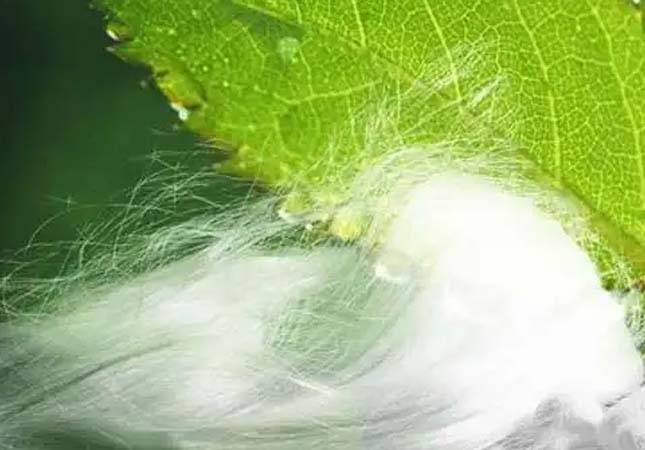Textile raw materials are the foundation of the textile industry and textile machinery is the tool of the textile industry. After a prolonged period of development, some ancient textile tools and crafts have already been replaced by technological textile machinery, such as fabric cutting machine replaced the manual tailoring, which greatly improved the production efficiency of textiles.
However, as the basic raw materials of fabrics, some natural fibers have been applied to textile production since ancient times, but most of them were obtained from agriculture and animal husbandry in ancient times, such as silk, hemp, cotton, wool, etc. Some such as kudzu fibers have long been dependent on wild collection. Among the 4 major types of fibers, silk, cotton, wool and hemp, silk fibers are commonly considered to be of superior quality and are known as the "Queen of Fibers", which is the representative of Chinese textile fibers.
Bombyxmori & Cocoon Storage Methods
1. Bombyx mori
Bombyx mori, also known as silkworm, is an insect that eats mulberry leaves and spins silk. There are numerous species of bombyx mori, and still numerous species of it are cultivated by modern people with the progress of human beings.

2. Cocoon Storage Methods
After collecting the cocoon, the silkworm chrysalis in the cocoon will break out of the cocoon after about 7 days if not being properly treated. Thus the cocoon storage methods are necessary because the long preparation time before reeling the silk is required and the cocoon needs to be fresh for spinning the silk.
The oldest method of storing cocoons is to kill the pupae in the sun to prevent them from emerging. "Qi Min Yaoshu" records 2 methods of storing cocoons: kill the cocoon by sunshine and kill the cocoon with salt. Obviously, the salt killing method is more efficient than the sun exposure method.
After the Tang and Song Dynasties, the sun exposure method was almost replaced by the salting method. During the Jin and Yuan Dynasties, the cage steaming method was invented. Then the Ming and Qin people created the urn mud method on the basis of the salting method, which is
similar to the later method of heating, was also called “king” in Chinese.
In Sichuan and Guangdong areas, cocoons are laid with bamboo woven ovens or silkworm foils, and then baked with charcoal fire. This cocoon storage method has strong yield, rapid speed, and is not restricted by different conditions, so it has been used till now.
Hemp Fiber & Its Processing Technology
1. Hemp Fiber
Hemp fiber is the earliest textile raw material used in China with a wide variety and differs in distributions and performances.
Hemp is an annual herb belonging to the Moraceae family. It is distributed in most areas in China. Various hemp seeds have been unearthed from the Neolithic site of Dahe Village, Zhengzhou, Henan, which indicated that hemp may have been used for textile material as early as that time. The hemp production became more prosperous after the Shang and Zhou dynasties, and was used as textile material since the Wei Dynasty.
2. Primary Processing Technology of Hemp Fiber
Although there are numerous types of hemp, its primary processing technology is essentially the same, that is, the use of various methods to degummy hemp fiber, remove hemicellulose, fruit gum, lignin and additional debris.
The main degumming method of hemp fiber is microbe degumming. Warmer climates allow microbes to multiply rapidly and degumming faster. In addition to natural climate control, the temperature of the water has to be controlled manually. Winter can use hot springs for retting to obtain a smooth and soft hemp cloth. There is also a boiling method for degumming, which is non-microbial degumming by adding the right amount of alkaline substances to the water.




